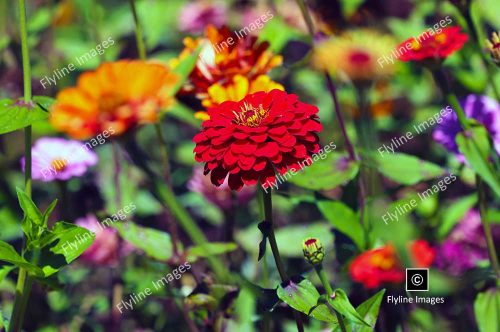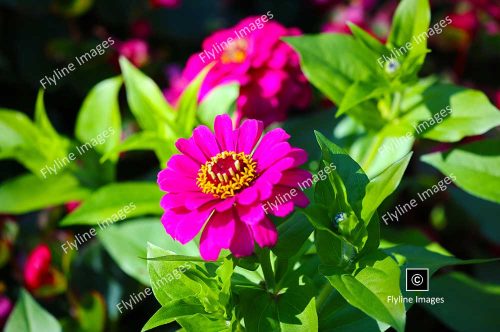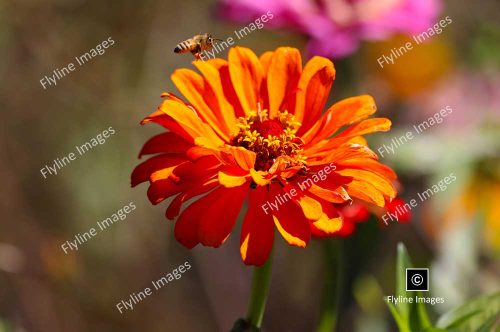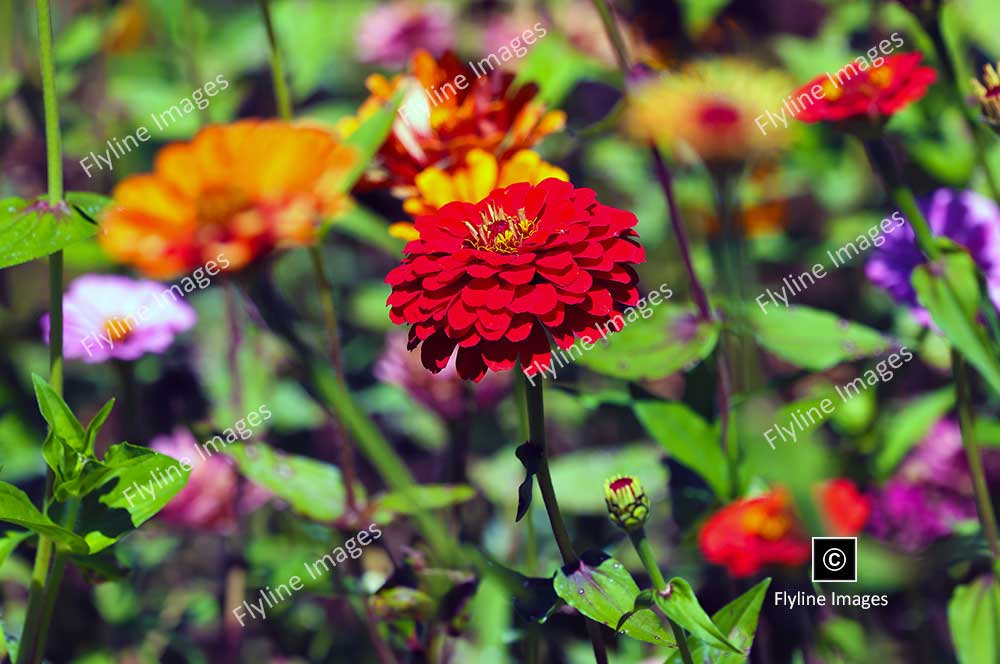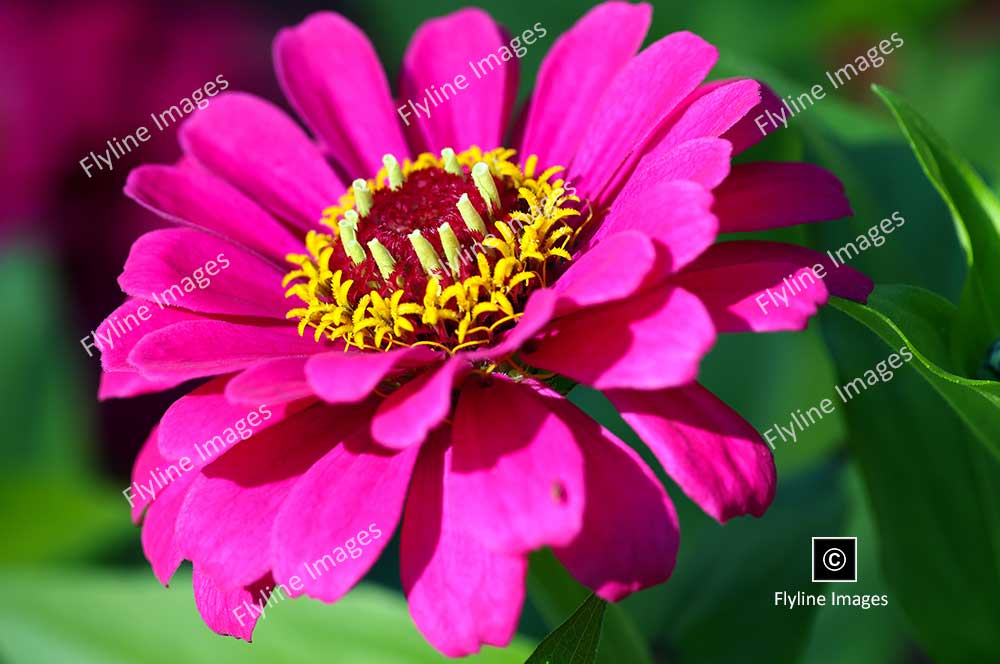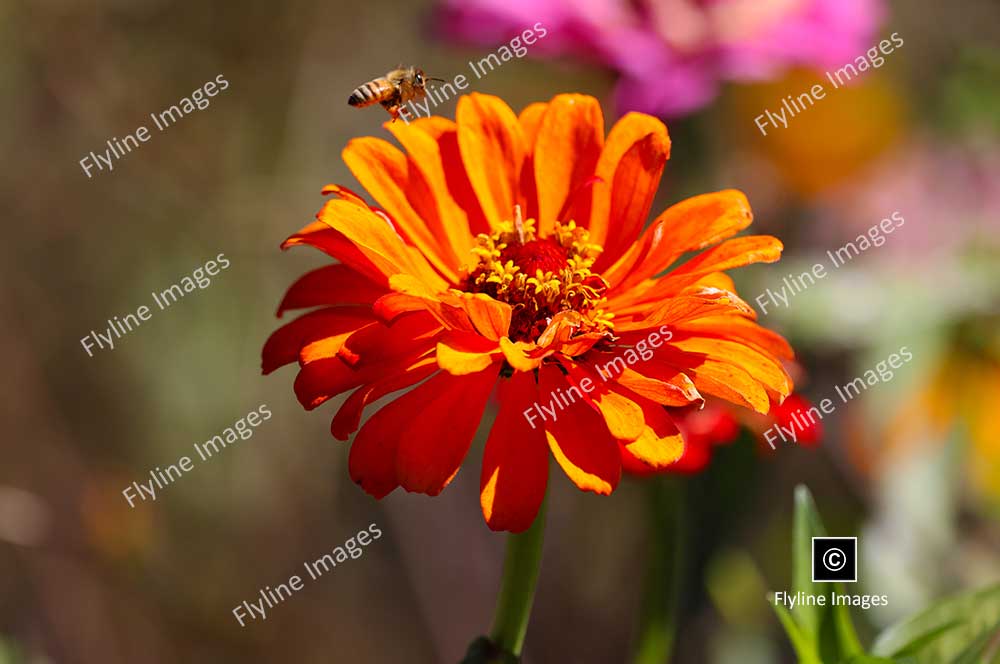Zinnias
Beautiful Vibrant Colors, Thrive In Sunny Climates
Zinnias are beloved by gardeners around the world for their vibrant and diverse color palette. These flowers belong to the Asteraceae family and are native to the Southwestern United States, South America, and Mexico. Their popularity largely stems from their easy cultivation and striking appearance. Zinnias come in a multitude of colors, including white, yellow, orange, pink, red, and purple, which are a result of the pigments in their petal cells. This broad spectrum of hues allows gardeners to create lively and colorful landscapes. Additionally, zinnias are known for their long blooming season and their ability to attract pollinators like bees and butterflies, making them both beautiful and beneficial additions to gardens. Their resilience and ability to thrive in hot, sunny climates further contribute to their widespread appeal.
Portrait Style Images
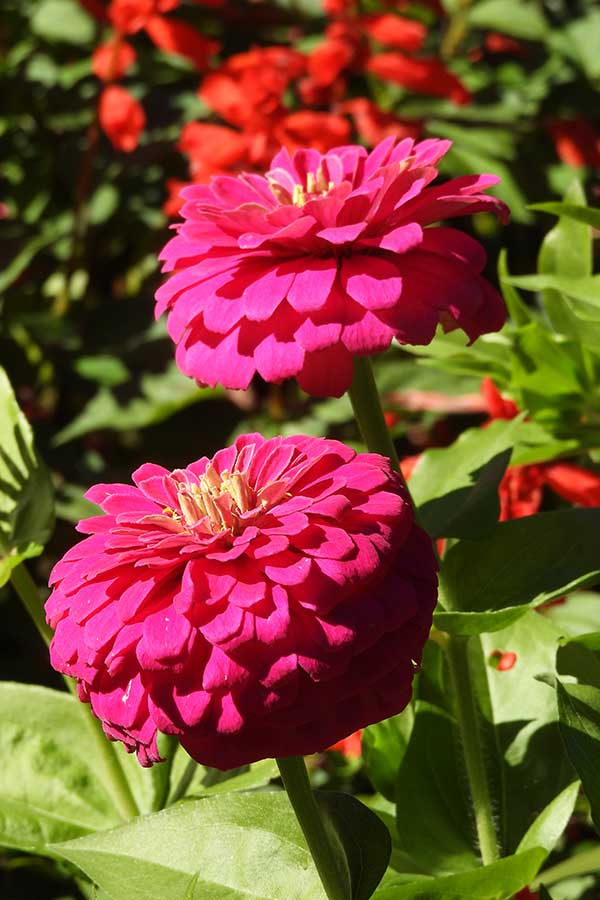 MORE ABOUT ZINNIAS
MORE ABOUT ZINNIAS
Zinnias are not only popular among gardeners, but they also hold significance in various cultures and traditions. In Mexico, zinnias were considered sacred by the Aztecs and were often used in religious ceremonies. They were also used to make dyes for clothing and as medicinal plants. In Victorian England, zinnias symbolized lasting affection and remembrance, making them a popular flower for bouquets and arrangements.
In addition to their cultural significance, zinnias have also been bred and studied extensively for their resilience to disease and pests. This has led to the development of different varieties of zinnias that can thrive in different conditions such as drought-tolerant or disease-resistant types. This continuous research and breeding efforts have made zinnias even more accessible for gardeners of all levels.
Apart from their ornamental value, zinnias also have practical uses. The flowers produce an oil that can be extracted and used for various purposes such as making soap, candles, and perfumes. Zinnia leaves are also edible and can be added to salads or used as a garnish. In some cultures, zinnias are even believed to have medicinal properties and are used in traditional remedies.
As with any plant, proper care and maintenance are necessary to keep zinnias thriving in the garden. They prefer well-draining soil and regular watering, but they can tolerate drought conditions. Deadheading, or removing spent blooms, can promote continuous blooming throughout the season. Zinnias are also prone to powdery mildew, a fungal disease that can be prevented by providing good air circulation and avoiding overhead watering.
Zinnias are not just pretty flowers in the garden but hold cultural significance and practical uses as well. Their vibrant colors, resilience, and benefits make them a favorite among gardeners and continue to bring joy and beauty to gardens all over the world.
Additional varieties of zinnias continue to be developed through ongoing research and breeding efforts, adding even more options for gardeners to choose from. With their long-lasting blooms, easy cultivation, and diverse uses, zinnias are sure to remain a beloved flower for generations to come. So if you’re looking to add some color and life to your garden, consider planting some zinnias and watch them thrive in all their glory. So why not brighten up your garden with these beautiful blooms and see the magic of zinnias for yourself?
MORE ABOUT GIBBS GARDENS
When you visit Gibbs Gardens in North Georgia, you can expect to be immersed in a serene and captivating landscape. This exquisite 300-acre estate is home to 16 distinct garden venues, each offering a unique horticultural experience. In the spring, the daffodil fields burst into life with over 20 million blooms, creating a golden carpet that delights the senses. The Japanese Gardens, one of the largest in the nation, transport visitors to a tranquil world filled with reflective ponds, graceful bridges, and meticulously pruned bonsai trees. Throughout the year, you can enjoy seasonal displays of azaleas, hydrangeas, and a variety of water lilies. Beyond the floral exhibits, Gibbs Gardens also features charming woodland trails, outdoor sculptures, and a peaceful manor house overlooking the stunning vistas—making it a perfect destination for nature lovers and casual visitors alike.
Aside from the breathtaking flora, Gibbs Gardens also offers a variety of activities and events throughout the year. From workshops on gardening and plant care to concerts and art exhibits, there is always something new and exciting happening at Gibbs Gardens. The annual Daffodil Festival, held in March, showcases over 20 million daffodils in full bloom and features live music, food vendors, and children’s activities. Moreover, the garden hosts several plant sales each year where visitors can purchase unique plants grown on-site by expert horticulturists.
In addition to its natural beauty and events, Gibbs Gardens has a rich history dating back to the late 1800s when it was first settled as a homestead. In the 1920s, the property was transformed into a dairy farm and later purchased by Jim Gibbs in 1980. Over several decades, Gibbs meticulously designed and cultivated the gardens to create a world-class botanical wonderland that continues to impress visitors today.
Visitors can also enjoy delicious meals at Gibbs Gardens’ onsite restaurant, serving fresh and locally sourced ingredients. The garden also offers picnicking areas where visitors can bring their own food and enjoy a leisurely meal surrounded by nature.


